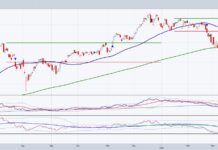The traditional home buying and selling process has been complex and costly. Home buys have had to deal with opaque data, and sellers can end up paying a meaningful fee for agents and other closing costs.
Thankfully, the rise of demand aggregators like Zillow have unlocked transparency, while iBuyers like Open-door have unlocked liquidity. To better understand iBuyers, understanding seller dynamics is key.
According to a survey by the National Association of REALTORS, around 45% of home sellers stated they did not have to move urgently and instead waited for the right offer.
Investment Implications
Many perceive iBuyers as removing legacy incumbents (agents) and offering a quick sale experience with certainty. But with service fees similar to a traditional sale process, price may not be the main point of competition. The transaction experience is then an iBuyers primary point of differentiation, and with 14% of sellers needing to sell very urgently, there is certainly a market for the offering. The battle is also not zero sum.
Yet this unscaled presence constrains an iBuyers’ proprietary inventory, which is in turn the core value proposition for buyers. With limited inventory, buyers may be constrained on key criteria like price and location. For buyers, companies like Zillow have aggregated the demand side of the equation and shine when it comes to listing data around the country.
Ultimately, the real estate industry is undergoing changes. Companies are attempting to transform it left and right, and portions may very well be successful. It will come down to the value propositions being offered to the home buyer or seller and the available alternatives.
Twitter: @_SeanDavid
The author or his firm may have positions in mentioned securities at the time of publication. Any opinions expressed herein are solely those of the author, and do not in any way represent the views or opinions of any other person or entity.








